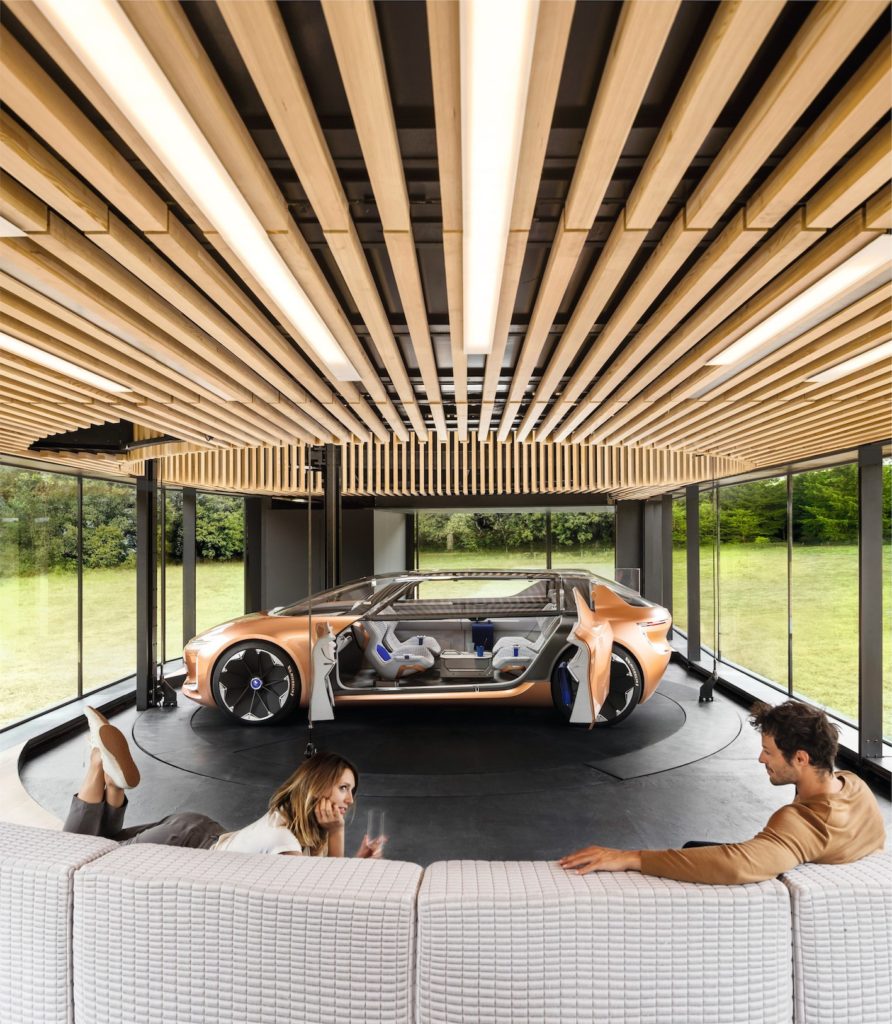

Renault has just unveiled three photos of its future Symbioz (profile above), a compact SUV positioned in the C-segment, even if it is based on the Captur platform, since it is a crossover version between SUV and estate which, at 4.41 m, adopts the name Symbioz. The name comes from a concept car (the ZH33) that appeared at the Frankfurt Motor Show in 2017. This is the story of the ‘real’ Renault SymbioZ.

With the SymbioZ concept, followed a few months later by a demo car, Renault is entering the world of autonomous cars. The driver is reluctant to let go and delegate the driving, but this concept is reassuring, thanks to its accomplished design. It also opens up the field of possibilities for what Stéphane Janin, who was in charge of concept cars at Renault from 2014 to 2019, calls “Carchitecture” projects. Because the ‘living together’ suggested by the name SymbioZ opens up a new concept of architecture that welcomes the car within its walls…

In 2017, with the presentation of this concept car, the somewhat utopian vision of Renault’s designers takes us far beyond the world of beautiful volumes and perfectly balanced proportions. Welcome to a world that is connected and integrated into an ecosystem, where the car becomes so much a part of our everyday lives that it becomes part of our homes and is no longer that cold, black object that is turned off when parked in the street at night.

SymbioZ invites itself into the family. And into your home. And that has an impact on its design, as Stéphane Janin points out. “We had to adapt to take account of a new and totally unprecedented dimension for us: the presence of the vehicle in a domestic environment. This meant working on the perception of the car, on how it felt at first glance.“

“The softness of its shapes and colours, and the great transparency of its windows are, for example, consequences of this adaptation. The choice of copper (below) for the bodywork was a logical one, as it is a soft colour that is more reminiscent of a domestic environment than that of a ‘machine’.”

“The crystal treatment of the glass surfaces adds a zen feel to the cabin. In addition, Mathilde Bancon and Fanny Sérouart (colour and materials department) and I chose grey with blue accents for the interior. These colours are fairly standard in modern, uncluttered homes, in a ‘Scandinavian’ style if you like. It speaks for itself.”

“In terms of materials, we brought wood, marble and even porcelain into the car, as these are construction and decorative materials with strong links to the home. The challenge was to be able to process them in a high-tech way in terms of refining and cutting, so that they could be used in cars, particularly in terms of weight. Not forgetting the felt used on the armchairs, which is the same as that used on the large sofa in the house. A creation by textile designer Aleksandra Gaca”.

In 2017, when SymbioZ appeared at the Frankfurt Motor Show, manufacturers were working to define the future of the autonomous car. Projects were springing up all over the place, and they had to be given a style. And it is of course on board that the changes are most profound. When the driver delegates the task of driving, he or she will have plenty of time to interact with passengers.

Let’s start with the work of Vincent Turpin, who was responsible for the interior design of the ZH-33 concept. “My work was inspired by the world of living and the possibility of sharing on board the vehicle. It was obvious and important that the seats should face each other for this exchange!” Total delegation of driving is not yet permitted by law.

It’s going to take much longer to reach level 4 of semi-autonomous driving, or even level 5 of fully automated driving, than was hoped in 2017 when this concept car was presented. Since then, incidents and accidents involving autonomous vehicles in the United States have cooled public opinion.

But that’s not stopping manufacturers from pressing ahead with their work, in the expectation that legislation will be relaxed as progress is consolidated by millions of kilometres of testing. SymbioZ may be capable of putting its driver on short-time working, but it’s still a real car, as its exterior designer, Jospeh Reeve, confirms: “This car has two personalities: it’s comfortable and relaxing in the world of delegated driving, and it becomes sporty by giving back the sensations and pleasure of driving when you take over the controls”.

Is Renault bipolar? No, as Mathieu Lips, Director of Innovation on this project, explains, “it sheds light on Renault’s vision of the automotive future, which is inevitably marked by the arrival of the autonomous car”. A statement which, even if it has faded somewhat, is still very much alive. This first step into the world of the connected and autonomous car was to lead Renault Design into a triptych of highly conceptual projects: EZ-Go, EZ-Pro and EZ-Ultimo. And today, this concept car lends its name to a production vehicle which, as you can see for yourself, has very little to do with this advanced study.
RENAULT SYMBIOZ CONCEPT CAR: THE RENAULT VIDEO :

